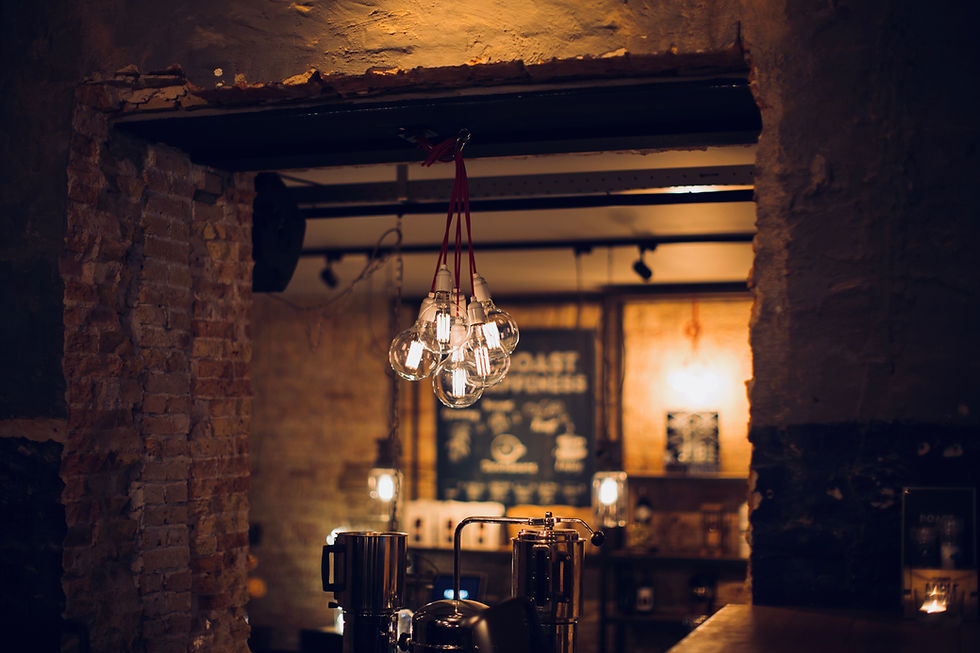Dopamine Decor: Creating a Home That’s Authentically You
- Lisa

- Sep 18
- 5 min read

I’m a big proponent of making your home feel like YOU, not like anyone else, so I was so excited to talk about it here on the blog. Over the years I’ve moved a lot, which means I’ve been ruthless with my curation of decor and only the things I loved most would make the cut. It’s been amazing to come into decorating a new space with only the things that feel most important because curation is an ever-changing collection that reflects who you are.
To have a home that’s as unique as you are is a gift. It allows you to fully embrace who you are as an individual or a family and speak directly to that. Bring in colors that make you feel something! Mix it up with non-decor items that speak to your history. If it only feels “meh” then out it goes. We’re done with having someone else dictate what our homes should look like. Mostly because we’re done feeling like we’re living in someone else’s house.
Dopamine decor is more than a design trend, it’s an outward expression of belonging rather than trying to fit in. That’s what makes it so joyful. As humans, we’re constantly evolving and our experiences and self-acceptance are deepening our understanding of who we are. So as we decorate with that new knowledge, it brings us lasting joy. Not so much in the actual decor pieces themselves, but in the unique combination of colors, items, and styles that feel truly personal.
Gone are the days where you picked a style and stuck with it. Gone are the days where a room’s original intention trumps how you’d best use the space. Gone are the days where everything is predictable. Now is the day where you get to decide your ideal mix of styles, how you use your space, and what conversation pieces you want to have no matter how unconventional they are.
To successfully incorporate the dopamine decor style, I’d start with a central pattern that you truly love. It could be on textiles, wallpaper, rugs, tile, etc. but make sure that if someone who knows you well saw it, they’d say, “oh, that’s so you!” If it isn’t that impactful, keep looking. Find something that has your favorite colors and type of motif and that you know you’ll love forever. Then build on that. Here are some key things to keep in mind as you get started:
Dopamine Decor Elements:
Colors That Feel Good
Dopamine decor leans heavily on the psychology of color and how they make us feel. Sunny yellows, energetic pinks, calming blues, or organic greens help us feel something, which connects with our hearts. These colors are chosen not just for their aesthetic appeal but for their ability to influence emotions, boost energy, and promote happiness. Start with one that brings you joy, then consider pairing contrasting colors or layering shades for a more nuanced emotion.
Patterns and Textures You Connect With
The use of patterns such as florals, geometric designs, or whimsical motifs can also play a big role in curating a feeling that brings us joy. Mixing and matching patterns adds visual interest and creates an environment that feels alive and stimulating. Textures also play a role, with soft velvets, textured wallpapers, or natural fibers contributing tactile delight.
Patterns are deeply personal, so when you incorporate them into your decor you’re making a bold statement about who you are, what you like, and what feels right for you. Patterns have the added benefit of often incorporating cohesive color palettes that can serve as a basis for your home’s color story.
The way you layer patterns is another way to tell your personal story through design. Pattern mixing is a great way to combine color, texture, and shape and there are as many possible combinations as there are people so it’s refreshing to walk into a home where someone else plays with patterns differently than you do.
Personal Expression Through Decor
Dopamine decor is deeply personal, emphasizing individuality over trends. It's more of a thoughtful curation rather than something meant to go together. It invites people to showcase meaningful items, family heirlooms, or art pieces that make them smile. Incorporating decor that tells a story or reflects personal experiences makes the space feel uniquely yours.
One of my favorite ways to bring personal expression through decor is thrift shopping. Go in to a shop and just look for something that speaks to you. Is there something quirky that just makes you smile? How could you incorporate it into your home even if it's not serving it's intended purpose? It's in mixing those things that you enjoy that your style really becomes personal.
A Sense of Whimsy and Fun
A lighthearted approach defines this style, with quirky accessories, unexpected design elements, or pops of humor integrated into the decor. This ties into the previous point as those fun things that make you smile will often be the thing in the room that sparks conversation and tells a lot about you. Think oversized lamps, abstract sculptures, or furniture with unconventional shapes.
What you find whimsical and fun will vary, and that's what makes it so much fun to walk into someone else's home and see how they style.
Functional Joy
Beyond aesthetics, dopamine decor helps make spaces functional and enjoyable. If you're too afraid to use the furniture or cuddle up on the couch, it's not going to be a place you really feel yourself in. Furniture, lighting, and decor should both enhance your day-to-day experiences AND turn everyday routines into moments of delight. For example, a cozy reading nook with a cheerful throw or a kitchen with brightly patterned tea towels.
One example of this is a light fixture above our dining room table. It's a chandelier with a sculptural feel, and whenever I flip on the light, I'm getting both the light it provides, and a moment of awe as I look at how the light plays on the elements of the fixture, the glow it gives, and how peaceful I feel looking at it. Functionally, it's just a light, but it also brings me joy.
Breaking Rules to Spark Creativity
I fully support knowing the rules and understanding why they work. And then I fully support breaking them in an intentional way. Knowing the rules gives us a point to start from, and then allows us to say, "what if I did it this way instead?" Whether it’s painting a ceiling in a bold color, mixing eras of furniture, or pairing seemingly clashing elements, the focus is on creating a space that feels exciting and free-spirited.
Every great writer started with basic grammar rules, then figured out how to use them to shape a novel. Steinbeck utilized sentence fragments to echo marketing messages and other external forces working on his characters in Grapes of Wrath, and it's memorable. Likewise, when we take design rules and then shape them to make sense in our own way, we're creating a memorable moment in our homes.
Incorporating Nature and Biophilia
Bring in the green stuff! Plants and natural materials are often included to create a calming contrast to the vibrancy created through color, pattern, and decor. Greenery not only adds visual freshness and a connection to the outdoors, but also enhances well-being by improving air quality.
And there's something grounding in natural materials such as cotton, linen, wood, and stone. There's a connection that just doesn't exist in plastic, vinyl, and composites that exists in natural materials.
Optimism and Positivity in Design
At its core, dopamine decor seeks to create an environment of optimism and happiness. Spaces are designed to uplift and energize, helping you feel inspired and joyful every time you enter a room.
It's about curating spaces that make you feel good, encourage creativity, and reflect your unique personality. It helps you feel more at home when you're home and it blends what you see with how you feel. The results are interiors that are as happy as they are beautiful and people who feel like they belong.









































Comments